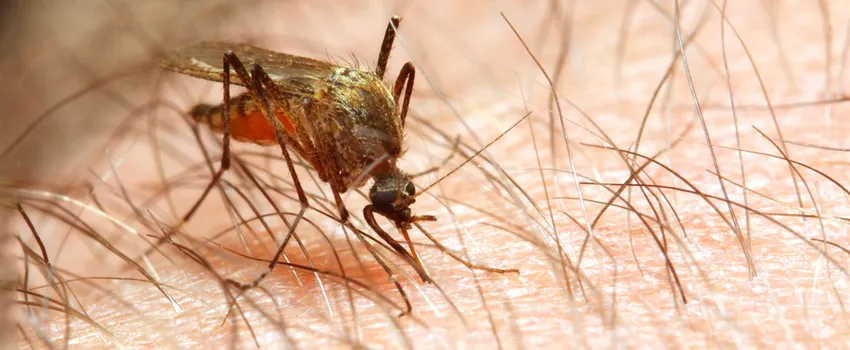
Photo by Kletr, Shutterstock.
Stanford Medicine Scope - July 19th, 2017 - by Peace Edem
Formerly bound to the African continent, recent cases of Rift Valley fever virus (RVFV) in western nations and China warrant increased vigilance given the viruses’ potentially devastating effects on local and national economies, Stanford researchers have said.
In a recent commentary published in Emerging Diseases, researcher Elysse Grossi-Soyster and associate professor of pediatrics Desiree LaBeaud, MD, discuss the globalism of the virus as a prime illustration of “One Health” – the idea that the health of people, animals and the environment are intrinsically linked.
A close look at the factors that influence the rates of disease transmission — vector, host, climate and environmental conditions and molecular elements of the virus — illustrates why the disease poses a significant threat, explain Grossi-Soyster and LaBeaud.
RVFV infects livestock and humans. Transmitted to livestock through mosquitoes, it can suddenly wipe out an entire herd of healthy cattle, sheep, goats or camels. This “sudden death” phenomenon can be detrimental for individual families and local economies dependent on livestock.
In addition, unlike many other mosquito-borne diseases, RVFV can be transmitted by many species of mosquitoes. These mosquitoes are able to conserve the virus in their respective populations through transmission to their young.
Environmental fluctuations also play an integral part in the growing overlap between host and vector environments. When drought is followed by heavy rainfall, communities often collect water for cooking or bathing near homes, providing breeding sites for mosquitos.
Industrial farming practices in the U.S. in which animals are confined in restricted pens can facilitate the process of extensive and rapid disease spread, the researchers write. An outbreak in the United States would have “explosive impacts” on animals, the authors note, which prompted the U.S. Department of Agriculture to identify the virus as a “significant threat” to the country’s expansive agriculture industry.
In addition, the risk of disease exposure in humans is increasing as a result of greater mobility and ease of travel, coupled with increasing proximity between humans and animals. The risk of infection is especially great for individuals who handle animal carcasses and blood products, such as slaughterhouse workers or butchers, the researchers write.
RVFV is often not accurately diagnosed and asymptomatic cases are also common, making it difficult to access treatment and enforce precautions to limit further spread of the infection. Without proper monitoring and treatment, 50 percent of individuals with severe disease do not survive, Grossi-Soyster and LaBeaud write.
With the risk of disease emergence steadily increasing, Grossi-Soyster and LaBeaud remind us all to pay attention to this important threat.

